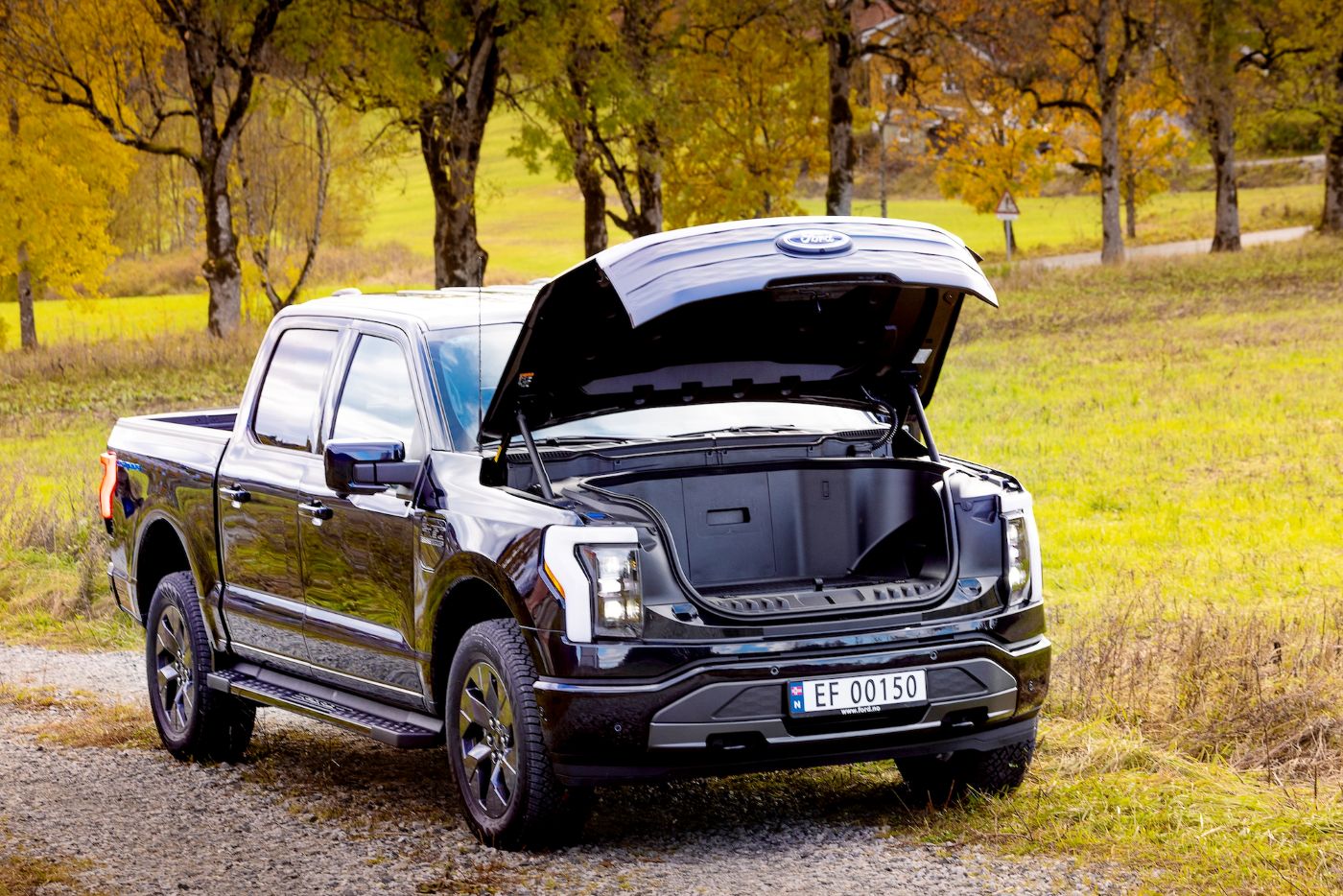Many of today’s automakers are using electric vehicles (EVs) as a platform to demonstrate their latest technological innovations and explore how to maximize the advantages of EV-specific architectures.
With a growing number of consumers turning to EVs in an effort to lower their carbon emissions and cut down on fuel expenses, electric vehicles are seeing a surge in popularity.
Additionally, advanced technologies that were once limited to high-end concept cars and flagship models are now beginning to appear in more budget-friendly EVs.
However, some of these features are either too new or too subtly integrated for the average EV driver to fully recognize or utilize.
That’s why it’s worth taking a deeper dive into 10 of the most impressive EV features that often go unnoticed by the general public.
From smart charging systems to regenerative braking capabilities, these features highlight the cutting-edge innovations powering the ongoing EV transformation.
So, buckle up and get ready to explore some of the most exciting and forward-thinking elements found in today’s electric vehicles!
1. Overlanding and Camping Convenience Out of Your EV
The absence of a traditional drivetrain with large, bulky transmissions and differentials consuming valuable space opens up new possibilities for electric vehicles.
As overlanding continues to gain traction as a favorite form of adventure, automakers are pushing boundaries to meet this growing demand.
Rivian, for example, took full advantage of the available space in the R1T by introducing what is essentially a large basement.
The Rivian R1T Pickup features a spacious pass-through compartment known as the ‘Gear Tunnel,’ capable of supporting up to 250 pounds of cargo.
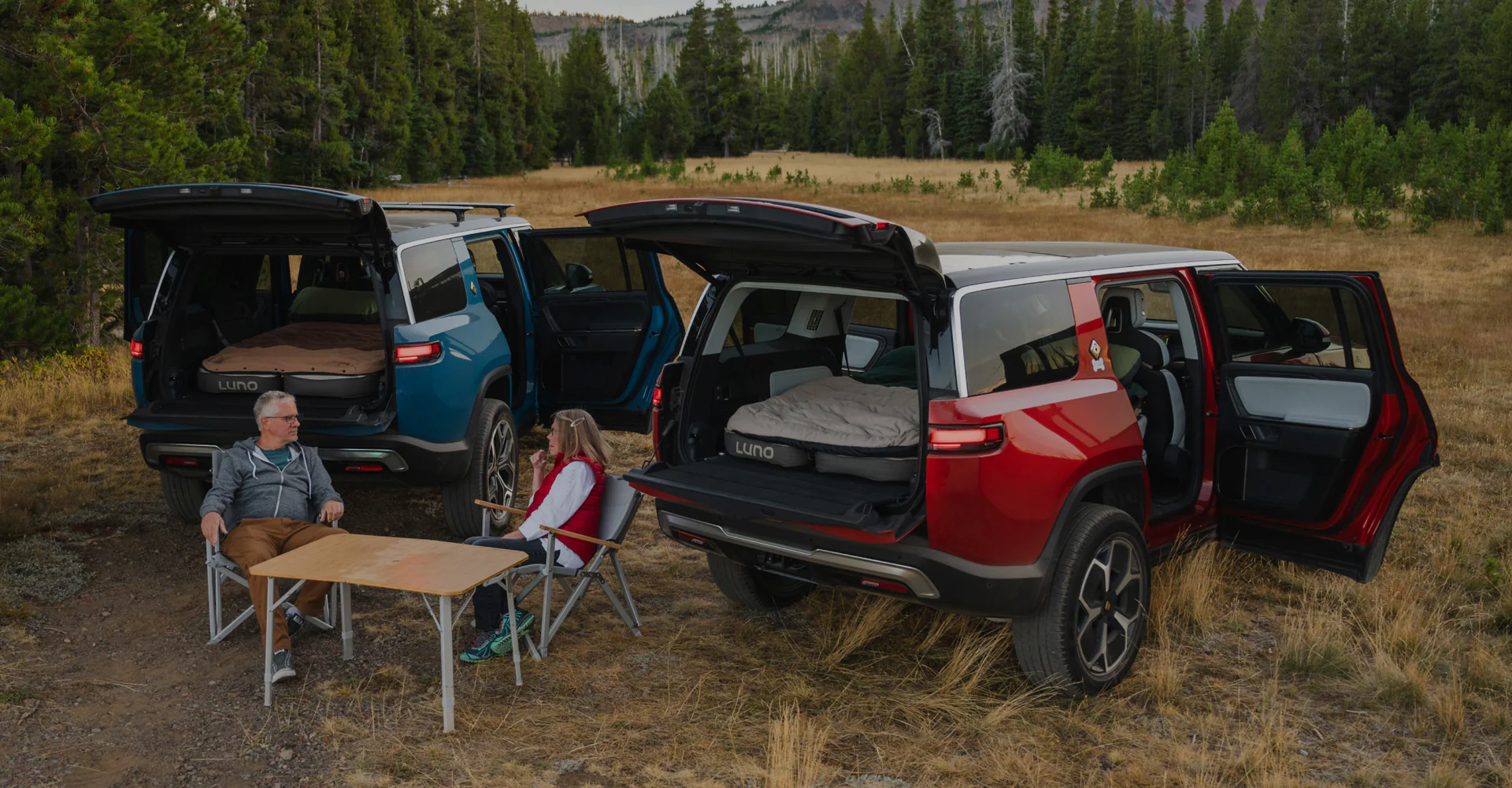
Alternatively, this tunnel can be equipped with Rivian’s Camp Kitchen x Snow Peak Package, a slide-out unit that offers the amenities of a medium-sized motorhome kitchen, including dual induction cooktops and a sink with running water.
The package also comes with three drawers stocked with all the cutlery essentials needed for a picnic with family and friends.
Best of all, the entire system runs quietly off the R1T’s robust battery pack, eliminating the need for noisy generators and allowing you to enjoy peaceful outings even in the most remote locations.
Also Read: Top 10 Worst and 10 Best Trucks for Towing
2. A Frunk to Chill Your Drinks and Food
What do electric vehicles and mid-engined supercars have in common besides four wheels? Many EVs also feature front trunks or frunks just like high-performance cars such as the Lamborghini Aventador or LaFerrari.
But instead of housing a massive V-12 engine, EVs use the front space for added storage, greatly enhancing practicality. Some manufacturers have taken this idea even further.
A prime example is the F-150 Lightning, which boasts a massive 14.1 cubic feet of front trunk space and a 400-pound load capacity.
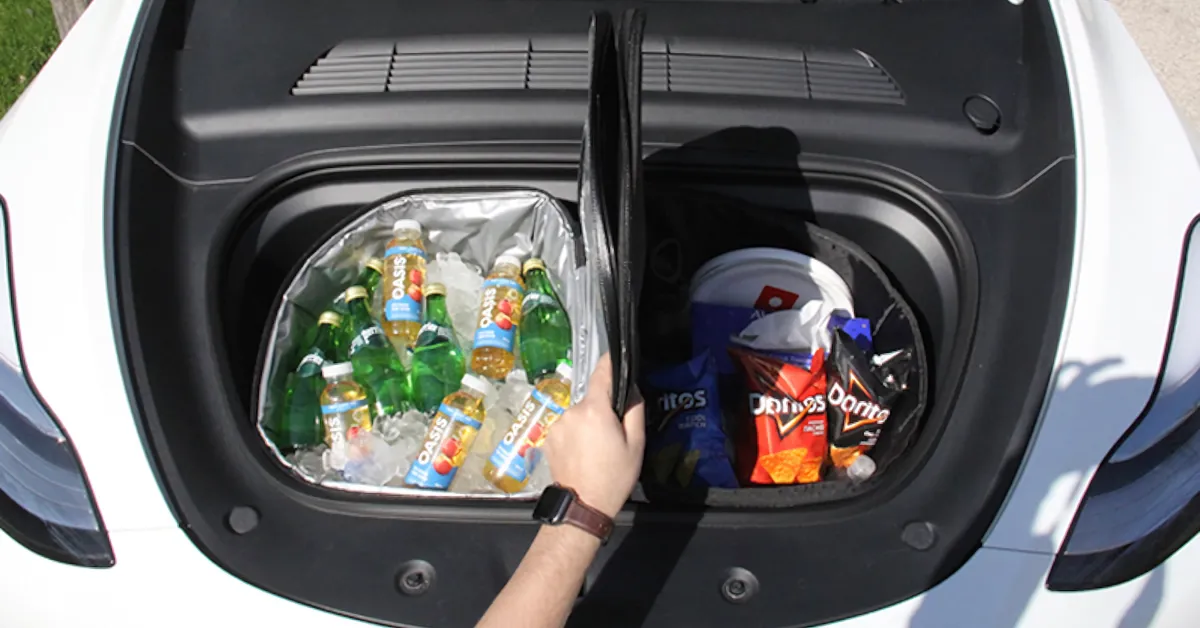
Additional features include a USB port and a drain plug, and because the compartment is completely watertight, you can convert the F-150 Lightning’s frunk into a large cooler capable of chilling more beverages at once than your neighborhood 7-Eleven.
The Mach-E offers a similar level of utility, making it just as versatile for food and drink storage on the go.
3. Bidirectional Charging or Vehicle to Load (V2L)
Modern electric vehicles are, in essence, giant power banks on wheels, equipped with batteries powerful enough to operate a medium-sized household.
This concept has led to the development of bidirectional charging, or V2L (Vehicle to Load), which allows power to flow from your EV’s charging port rather than into it.
In practice, this means you can connect standard household appliances to your EV using a basic adapter, and even power larger items like a trailer or a small home for short durations.
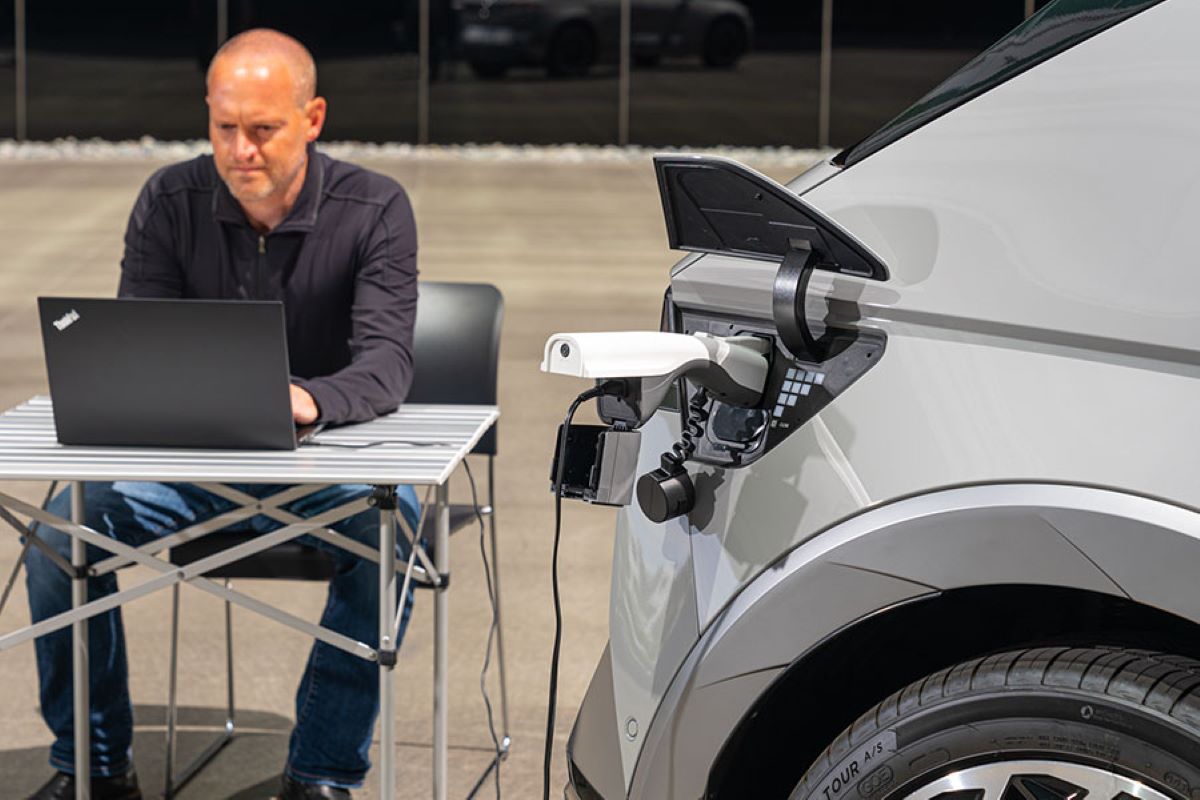
Many vehicles currently available on the market support V2L functionality, such as the Mitsubishi Outlander PHEV, as well as all vehicles built on Hyundai’s new E-GMP platform.
This includes the Ioniq lineup, the Kia EV6, and the Genesis GV60 all of which offer V2L either as an optional feature or standard equipment.
Vehicles like the Ioniq 5 can supply up to 3.6kW of power, and to preserve battery health, the V2L system is automatically deactivated when the battery level drops below 15 percent.
4. Audi’s Hyper-Realistic Augmented Reality Display
Electric vehicles frequently serve as showcases for manufacturers to highlight their most advanced technologies.
One standout example is Audi’s latest E-Tron lineup, which includes an augmented reality display that lives up to its impressive name.
This high-tech system utilizes a multi-layered projection technique to cast essential driving information directly onto the windshield.
The full-color display is capable of presenting data such as lane guidance, blind spot alerts, and augmented reality-based navigation with turn-by-turn instructions far surpassing the functionality of a traditional heads-up display.
The Audi Q4 E-Tron, for instance, employs a sophisticated network of external sensors and cameras to precisely overlay turn directions onto your line of sight, making missed turns a thing of the past.
From the driver’s viewpoint, the augmented reality (AR) content has a field of view equivalent to a diagonal of about 70 inches. Just beneath this display is a flat near-field area, referred to as the status section.
This section provides static information such as the current speed, detected traffic signs, as well as symbols from the assistance systems and navigation. It appears to float roughly three meters in front of the driver, offering essential data at a comfortable viewing distance.
At the core of this system lies the picture generation unit (PGU), which is embedded deep within the extended instrument panel. A high-brightness LCD produces light beams that are directed onto two flat mirrors.
Specialized optical components then split the output into separate segments for near-field and far-field projections. The flat mirrors guide the beams onto a large, electrically adjustable concave mirror, which then sends them to the windshield.
The windshield reflects this image into what’s known as the eyebox—ultimately projecting it to the driver’s line of sight. This setup enables the driver to see the virtual symbols as clearly and seamlessly as the physical world around them, at a perceived distance of ten meters or more, depending on the driving situation.
On the software side, the AR Creator acts as the brain of the system and handles the image rendering. This processing unit, part of the third-generation modular infotainment platform (MIB 3), consists of several modules working together.
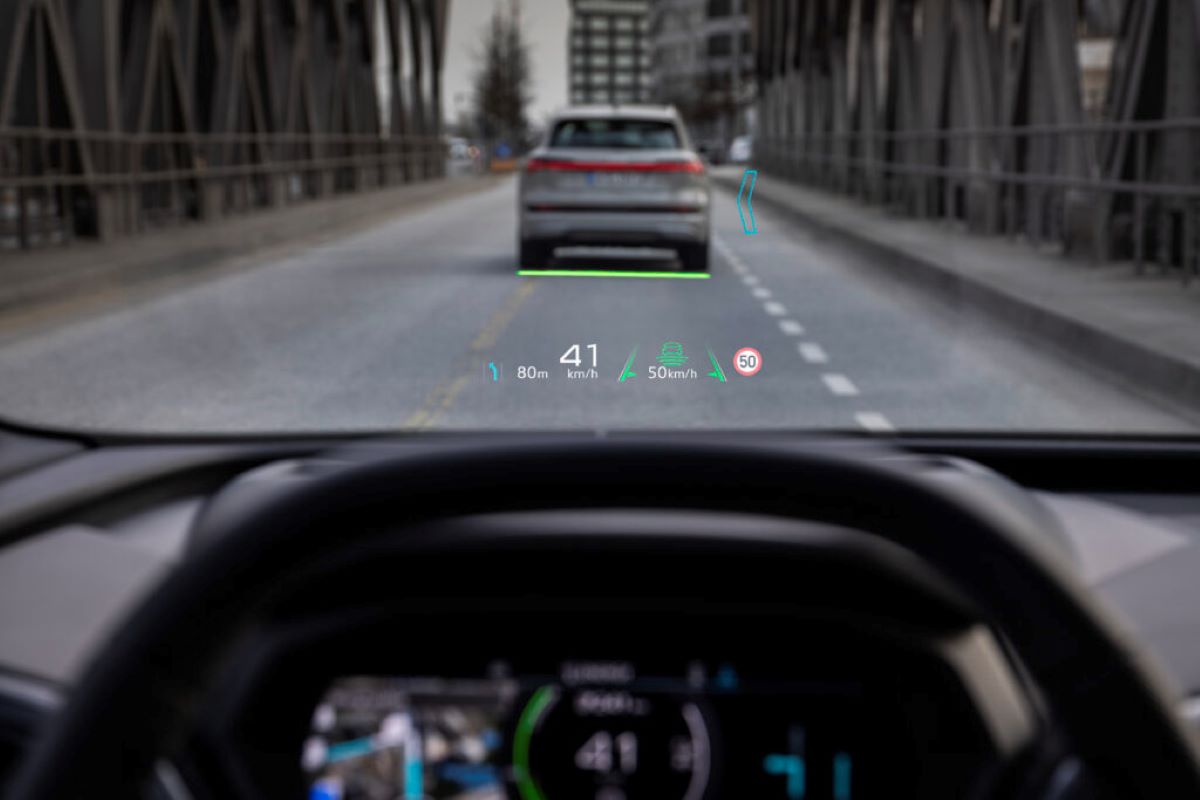
The AR Creator generates visuals at a rate of 60 frames per second, adapting them in real time to the geometry of the projection optics. Simultaneously, it calculates where these visuals should appear in relation to the vehicle’s surroundings, drawing data from the front camera, radar sensor, and GPS.
The software is robust, built with approximately 600,000 lines of code—roughly 50% more than the first version of the Space Shuttle’s control system.
To ensure visual stability, the AR Creator compensates for the slight delay between when a sensor detects an object and when the display responds. Within that fraction of a second, the Q4 e-tron might move noticeably—perhaps from braking or hitting a pothole. To maintain display accuracy, multiple calculations are performed continuously.
One occurs within the camera software, another predicts the vehicle’s forward motion using the latest data, and a third estimates vertical movements using data from the camera, radar, and electronic stabilization control (ESC) sensors. All of this feeds into what’s called “shake compensation,” which is applied just milliseconds before image output to ensure the visuals remain stable and do not shift unexpectedly.
The navigation functionality of the augmented reality head-up display particularly showcases its potential. A floating arrow, referred to as the drone, dynamically indicates upcoming maneuvers on the navigation route.
As the vehicle approaches an intersection, the drone announces the turn with a preliminary visual, followed by an animated arrow that guides the driver accurately into the new direction.
If the road continues straight afterward, the drone leads the way and briefly disappears, only to return just in time for the next turn. Meanwhile, the distance to the upcoming turn is displayed in meters within the lower section of the near-field display area.
Even with adaptive cruise assist activated—which helps the vehicle stay centered in its lane—the AR head-up display provides additional visual cues. For example, if the Q4 e-tron nears a lane marking without the turn signal being used, the lane departure warning overlays the actual lane marking with a red line.
Another function supports vehicle-following scenarios: when adaptive cruise assist is active and tracking another car, a colored stripe highlights that vehicle on the display.
This feature allows the driver to monitor the assist system’s status without diverting attention from the road. If the system needs to verify the driver’s alertness, a red warning symbol and a colored marker appear to prompt a response.
Also Read: 10 Vehicles That Don’t Let You Disable Auto Stop-Start
5. Tank Turn Capability
Building on Tesla’s bold promise for the Cybertruck, Mercedes is bringing this feature closer to reality with the upcoming Mercedes EQG the all-electric version of the iconic G-Class equipped with groundbreaking ‘Tank Turn’ technology.
With the EQG, Mercedes aims to elevate the G-Wagon experience by integrating an electric powertrain.
The upcoming SUV will feature a quad-motor electric drive, and a camouflaged prototype has already been spotted online performing the much-talked-about tank turn maneuver.

While the American market has the new GMC Hummer showcasing its own unique Crabwalk feature, the EQG’s tank turn is designed to enhance the SUV’s off-road capabilities.
However, it remains to be seen if this feature will make it into the final production model set to launch in 2024. It’s worth noting that Rivian was actually the first automaker to introduce this innovative technology.
6. Porsche Taycan’s Intelligent Charging System
One of the biggest challenges for EV owners is finding the right charger that works seamlessly with their vehicle.
Often, it’s only after purchasing an EV that drivers realize how critical it is to locate a compatible charger, which can involve a frustrating amount of trial and error.
Porsche tackled this problem by equipping its Taycan four-door EV with a smart automatic charging system.
This system uses GPS to detect when the car is near a charging station, automatically opens the charging port, and starts charging without any driver intervention.
This feature removes any uncertainty about charger compatibility. Paired with Porsche’s three-kilogram Mobile Charger Plus, the Taycan can be charged both at home and on the road with a maximum power output of 11 kW.
Once route guidance is activated, the system helps the customer travel with ease and efficiency, even over long distances, minimizing unnecessary delays.
Initially, the navigation system calculates either the fastest or shortest route while factoring in real-time traffic data. If the estimated battery charge at the destination is projected to be below 13 percent, the Charging Planner incorporates charging stops to ensure a minimum range upon arrival.
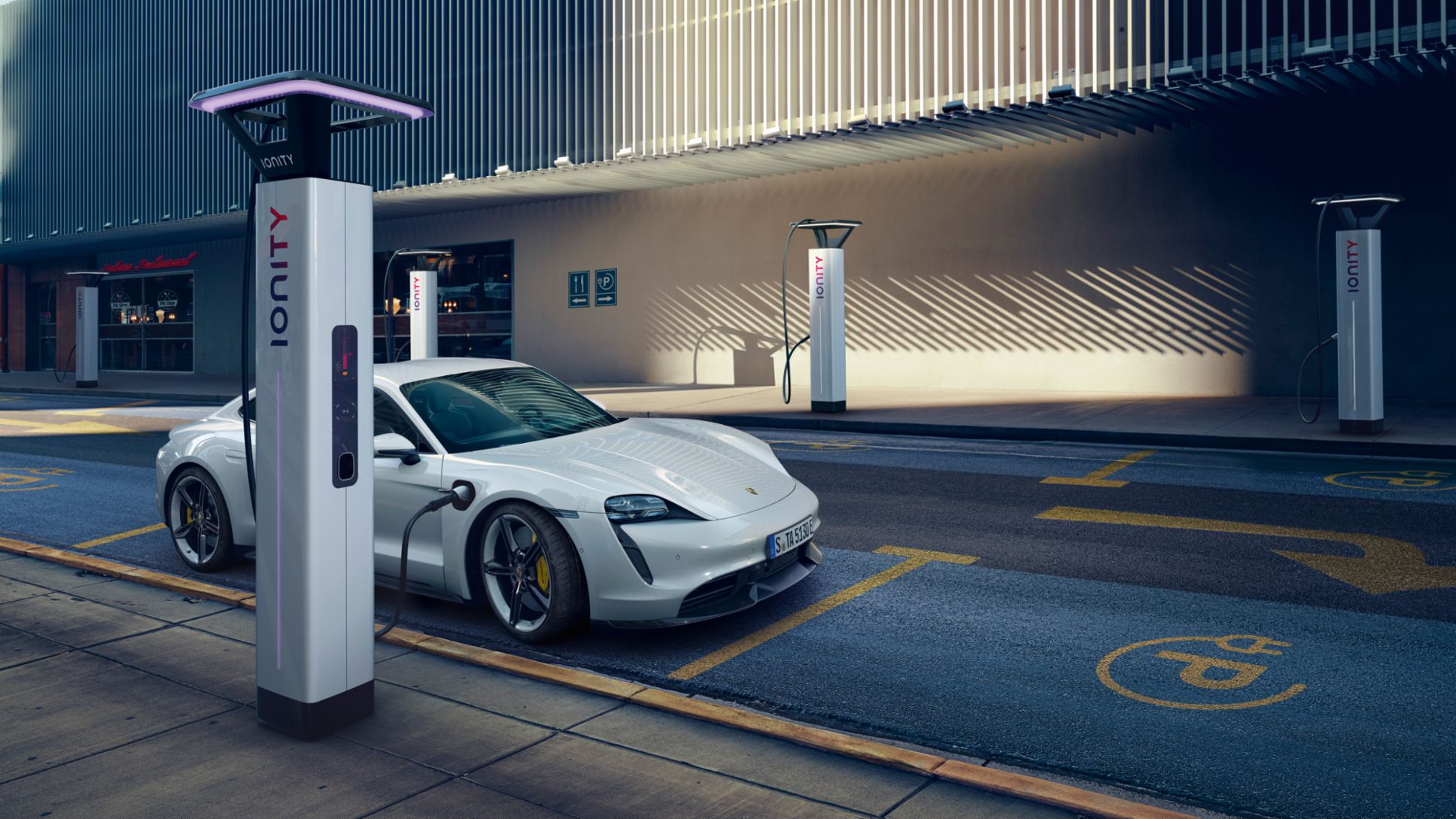
In Range mode, this threshold is reduced to six percent, which pushes the vehicle’s range capabilities further to potentially eliminate the need for a charging stop altogether.
The planning process also considers the charging power available at different stations and the corresponding time required to charge up to an optimal level of 80 percent. It includes stations that may not lie directly along the route, allowing those with higher output capacities to be prioritized.
This strategy further optimizes total travel time, and the associated charging durations are factored into the predicted arrival time. To maximize the efficiency of charging stops, the system also activates battery preconditioning well in advance, ensuring that the battery is in the ideal state to receive power at the maximum rate available.
Throughout the entire navigation process, the Charging Planner remains active, continuously refining the route and charging schedule based on real-time traffic updates.
The necessary online functionality for this feature is included in the Porsche Connect package for the Taycan for a period of three years, though availability may vary by country.
Even without an online connection, the Charging Planner can offer charging recommendations using locally stored database information. For added convenience, the Charging Planner is also accessible through the Connect app, allowing users to plan trips in advance from home and send the route directly to the vehicle.
To expand its capabilities, the Charging Planner can be paired with the optional Porsche Intelligent Range Manager. Once route guidance begins, this tool operates in the background, fine-tuning all relevant system parameters to achieve the shortest travel time while maintaining a high level of comfort.
Whether in Normal, Sport, Sport Plus, or Individual driving modes, the Porsche Intelligent Range Manager can modify the route dynamically—such as by reducing the number of charging stops and setting a lower maximum speed—if doing so results in a quicker arrival.
This recalculation happens automatically and the alternative route is offered to the driver, who can accept it either directly or by accessing it under “Alternative routes” in the Porsche Communication Management (PCM) system.
If the proposed route is confirmed, the Taycan automatically switches to Range driving mode. This mode proves especially beneficial on long-distance journeys that require charging stops, as it helps determine more time-efficient routes.
While in Range mode, the Porsche Intelligent Range Manager adjusts the vehicle’s speed limit and climate control settings as needed.
This enables the most economical driving style when combined with manual speed and air conditioning adjustments. Additionally, the system continuously refines the route based on routing data, elevation changes, speed limits, and traffic conditions, all while maintaining driving comfort and minimizing total travel time.
7. Electric Preconditioning for Efficient Climate Control
While modern internal combustion engine (ICE) vehicles have started offering convenient features like remote start and cabin pre-heating, these functions are inherently easier for ICE cars because they generate their own heat.
Electric vehicles, however, don’t produce enough heat internally to warm the cabin and instead rely on heaters or heat pumps that consume valuable battery power, which can quickly reduce the EV’s driving range.
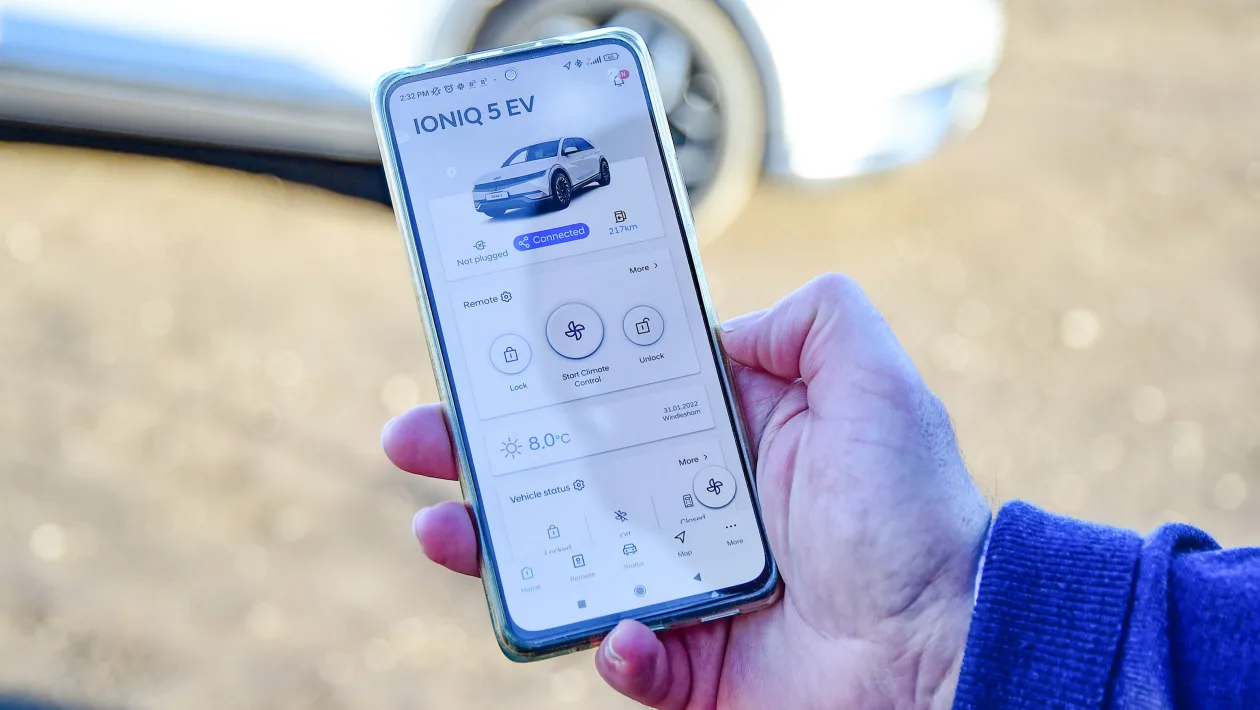
This is where electric preconditioning becomes essential. Preconditioning allows owners to heat or cool their vehicle in advance while it is still plugged in and charging.
By doing so, the energy required for climate control comes from the external power source rather than the battery, preserving the car’s range.
Maintaining the desired temperature afterward also uses less energy. This system can usually be set up through the vehicle’s settings or activated remotely via the companion app, helping drivers conserve precious battery life.
8. One-Pedal Driving to Maximize Convenience and Efficiency
Most contemporary EVs feature regenerative braking, an innovative system where the electric motor functions in reverse to slow the car down.
This process converts the energy usually lost through friction and heat during braking back into electricity, which is then stored in the battery for future use.
This technology not only helps conserve energy but also enables one-pedal driving. The concept of ‘one-pedal driving’ is straightforward: it lets drivers control the vehicle’s speed using only the accelerator pedal.
When the driver lifts their foot off the accelerator, regenerative braking automatically engages, gradually slowing the vehicle as if the brakes were applied.
Some EVs take this a step further by allowing drivers to adjust the intensity of regenerative braking to match their personal driving preferences, offering a customizable and efficient driving experience.
If you’ve recently stepped into the world of electric vehicles, chances are you’ve encountered the term one-pedal driving. While it may not be as widely discussed as other EV features, it’s a distinct functionality that internal combustion engine (ICE) vehicles simply don’t offer.
One-pedal driving is one of the standout innovations that enhances usability and driving comfort in EVs. However, taking full advantage of it requires some adaptation and a basic understanding of how it works.
Fortunately, despite its technical-sounding name, the concept is easy to grasp. It’s also a feature you’ll likely use regularly—especially if you drive frequently in city or suburban traffic—thanks to its convenience and intuitive design.
There are numerous advantages to adopting one-pedal driving, including greater energy efficiency and an extended battery range. Understanding how it works is essential if you’re aiming to get the most out of your EV, particularly when you’re trying to maximize distance on a single charge.
It’s important to note that one-pedal driving isn’t a full replacement for the traditional two-pedal setup. Rather, it’s a supplemental system that enhances your control and overall driving experience.
As automotive brands continue to push automation and electrification, this feature will likely play an even more critical role in the future of mobility. The information provided in this article is based on data collected from various manufacturers and trusted sources such as J.D. Power to ensure accuracy and relevance.
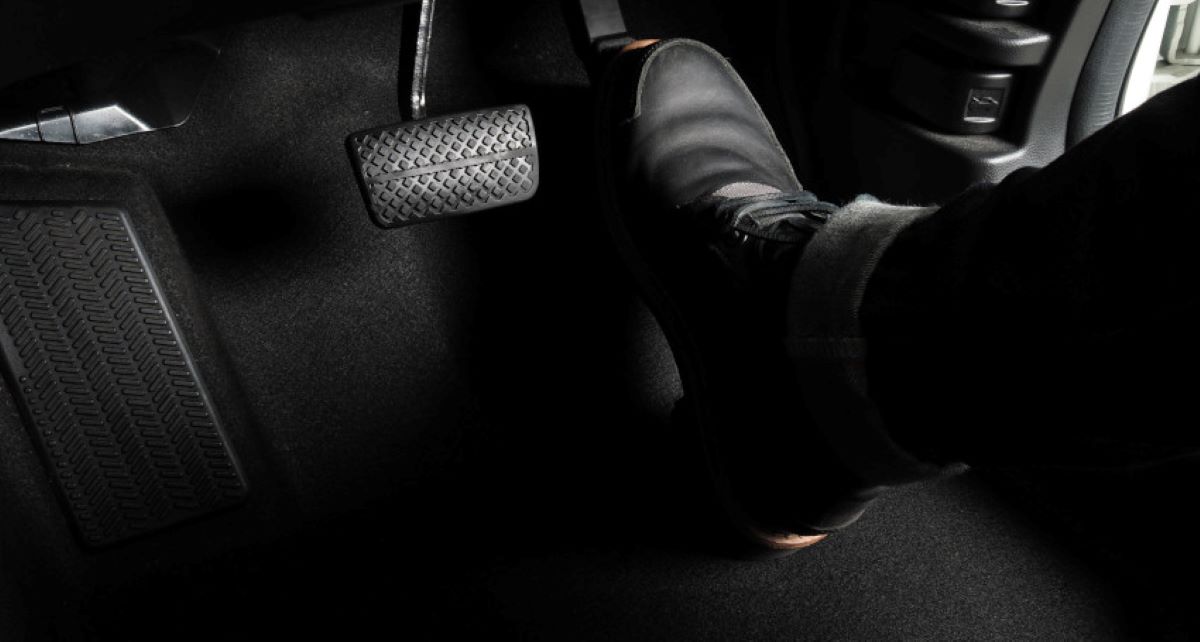
One-pedal driving allows an electric vehicle to accelerate and decelerate using just the accelerator pedal. When you press down on the pedal, the car drives forward as expected.
However, once you lift off, the EV activates its regenerative braking system to slow the vehicle more quickly than it would if it were merely coasting. This braking process works by reversing the electric motor’s rotation, allowing it to generate electricity from the vehicle’s motion rather than consuming energy.
That electricity is then directed back into the battery, effectively recapturing energy that would otherwise be lost. This is the same battery recharge process that occurs during plug-in charging—only in real-time as you drive.
That said, one-pedal driving isn’t designed for every situation. It doesn’t immediately bring the vehicle to a full stop, which means it’s not suitable for emergency braking. However, it’s an excellent solution for navigating congested city traffic because it reduces your dependence on traditional brake components like discs and rotors.
Many EVs also allow you to adjust the level of regenerative braking. Some systems offer a more aggressive setting that can bring the car to a complete stop, while others simply slow it down gradually, depending on how much lift-off from the accelerator occurs.
As you grow more accustomed to one-pedal driving, you’ll find it improves overall driving efficiency and reduces wear on the vehicle’s braking system. This results in lower maintenance costs and a smoother, more refined driving experience.
Once you’re comfortable with the system, it allows for better speed modulation and more seamless control. The feature also simplifies the act of driving and enhances energy recovery, which can noticeably increase real-world EV efficiency.
One of the most appealing aspects of one-pedal driving—especially for commuters—is the convenience it brings. Managing both acceleration and deceleration with a single pedal reduces the need to constantly shift your foot between pedals, making traffic-heavy driving less tiring and more intuitive.
It also pairs well with adaptive cruise control systems found in many EVs, which work alongside regenerative braking to slow the vehicle down.
This creates a near-autonomous driving experience. As noted: “Most EVs feature adaptive cruise control, which works with regenerative braking to slow the car down, essentially making it an autonomous one-pedal system.”
Another standout advantage of one-pedal driving is its ability to enhance energy efficiency. By reclaiming kinetic energy through regenerative braking and feeding it back into the battery, the vehicle can extend its driving range and reduce dependence on external charging.
This not only boosts performance but also lowers wear on the mechanical braking components—an especially valuable benefit for EVs, which tend to be heavier than their ICE counterparts. Brake and rotor servicing is an often overlooked aspect of EV ownership, and one-pedal driving helps mitigate the wear-and-tear associated with that.
The system’s benefits are well summarized: “One-pedal driving simplifies driving by allowing control of both acceleration and deceleration with just the accelerator pedal.” “It enhances energy efficiency through regenerative braking, which helps recharge the battery and extend driving range.”
“The system reduces wear on the traditional brake components, leading to lower maintenance costs over time.” “One-pedal driving offers smoother control in stop-and-go traffic, reducing driver fatigue and improving convenience.”
“It allows for quicker and more intuitive responses when slowing down, improving the overall driving experience in urban environments.” “Adjustable regenerative braking levels give drivers more flexibility to customize deceleration according to their preferences or road conditions.”
Adding one-pedal driving to your daily routine is a simple but transformative shift. When approaching a stop, rather than pressing the brake, you simply ease off the accelerator and let regenerative braking do the work.
In many EVs, this will slow the car to a near-stop or even a full stop, depending on the system’s configuration. While there may be a brief learning curve, the rewards come quickly—enhanced driving comfort, increased control, and more efficient energy use.
You can even tailor the experience further by selecting different levels of regenerative braking, giving you the ability to dictate how aggressively the car decelerates when you lift off the accelerator. This flexibility ensures that you can adapt the system to match your personal preferences and specific driving conditions.
9. Porsche’s Home Energy Management System
The Porsche Taycan lineup remains one of the fastest-charging electric vehicles available, capable of going from five to 80 percent state of charge (SoC) in just 22.5 minutes when connected to an 800-volt charger, with a peak charging capacity of 270 kW.
While using a home charging box can quickly replenish the Taycan’s battery, Porsche notes that 80 percent of Taycan owners prefer to plug in their vehicles for overnight charging.
To optimize this routine, Porsche developed a clever Home Energy Management (HEM) system an intelligent control center integrated into the residential power grid.
Beyond ensuring smooth and trouble-free charging, the HEM system identifies the best time windows for charging and adjusts the process based on electricity costs and timing.
Essentially, it charges your Taycan when electricity is cheapest, fine-tuning the charging time and rate so that your battery is fully charged by morning.
Porsche’s Home Energy Management System (HEMS) is an intelligent charging solution designed to optimize how Porsche electric vehicles, such as the Taycan, are charged at home. It seamlessly connects the car, the Porsche Mobile Charger Connect or wallbox, and the household electrical system to ensure efficient, safe, and smart energy usage.
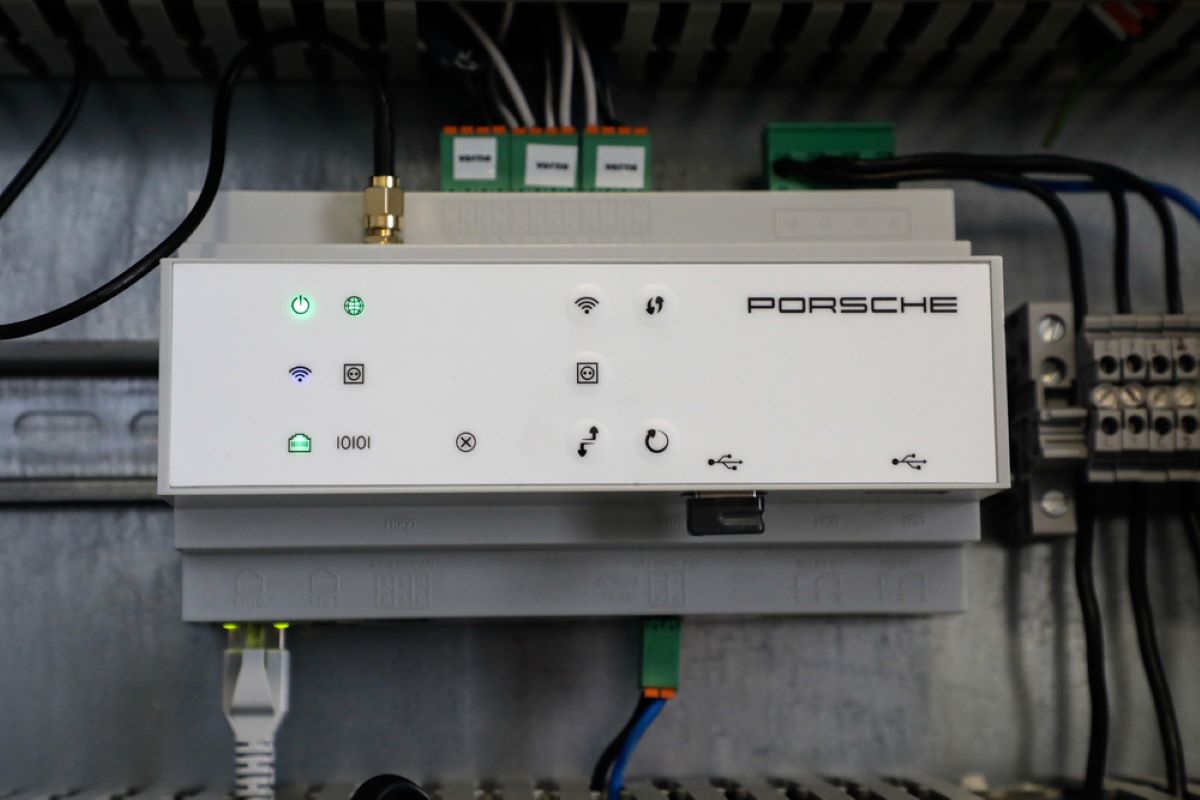
The primary function of HEMS is to dynamically manage the power being used by the household and the vehicle, preventing overloads by adjusting the EV’s charging output based on real-time energy consumption within the home. This ensures that your car charges as quickly as possible without disrupting other electrical systems.
A key feature of HEMS is its ability to integrate with renewable energy sources, such as solar panels. When connected, the system prioritizes the use of solar power or stored energy to charge the vehicle, reducing reliance on the grid and lowering both emissions and energy costs.
HEMS also supports intelligent charging schedules by taking electricity tariffs into account, allowing users to charge during off-peak hours when rates are cheaper. This functionality is especially valuable for users on time-of-use billing plans and can be easily controlled and monitored through the Porsche Connect app.
Safety is another core component of the system. By constantly regulating the charging load and monitoring household power usage, HEMS helps prevent overheating or short circuits and protects both the vehicle and the home’s electrical infrastructure.
It also enables a more seamless and controlled charging experience through remote access features, giving users the ability to view charging status, adjust settings, and plan energy use efficiently from their smartphone.
The Home Energy Management System is designed to be future-proof, aligning with Porsche’s broader vision of sustainable mobility and smart energy integration.
It supports evolving technologies such as vehicle-to-grid (V2G) systems and is compatible with various smart home setups and renewable energy solutions. For customers seeking a long-term, eco-conscious, and cost-effective home charging setup, HEMS offers a premium, forward-looking solution that enhances both convenience and performance.
10. EVs with Three Pedals and a Stick Shift
As electric vehicles rise in popularity, a wave of resto-mods has emerged, combining modern electric powertrains with classic car bodies.
However, despite their vintage looks, many of these conversions lack the engaging feel of manual gear shifting. Some innovators have sought to fix this by incorporating manual transmissions into EV conversions.
One such company is Electrogenic, based in Oxford, England, which specializes in EV conversions for classic cars and has recently focused on projects that bring back genuine driver involvement.
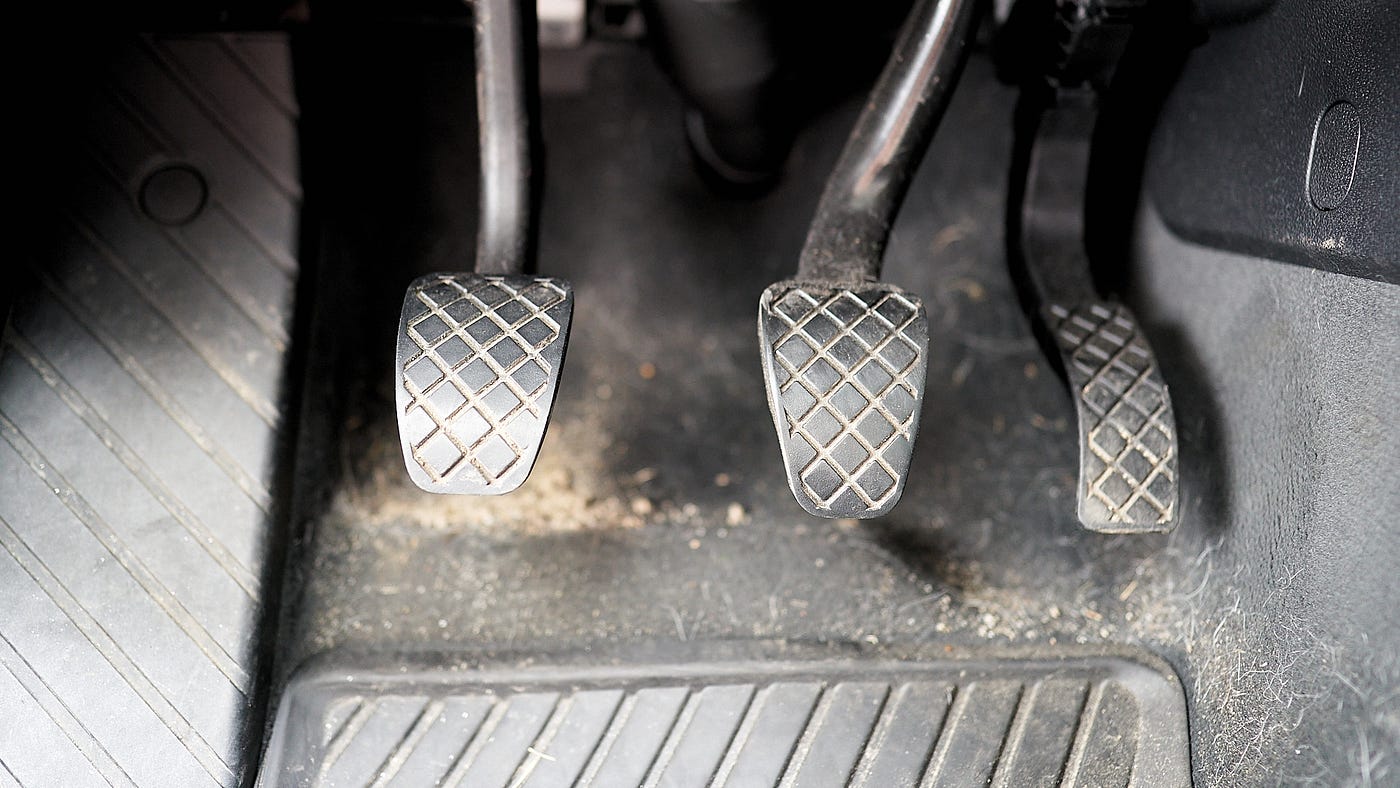
Their latest creation is a Porsche 356 outfitted not only with a 120-horsepower electric motor but also with a manual gearbox.
Instead of the motor driving the rear wheels directly, it’s connected to a flywheel, which then interacts with the Porsche’s original clutch pack to manage power and throttle input.
The key to this system’s success is a custom-designed adapter that allows everything to work seamlessly together, preserving the tactile driving experience while embracing electric power.

